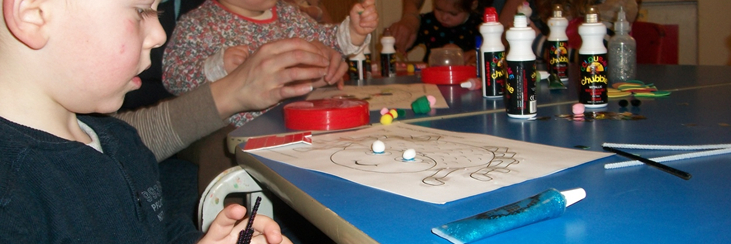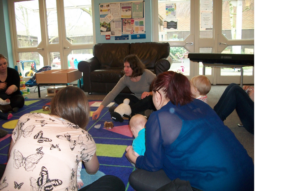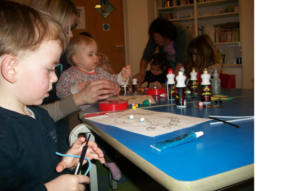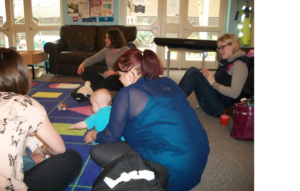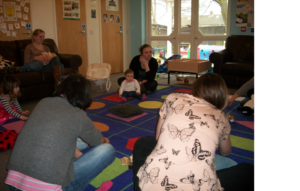Continuing on from our ‘stories with music’ project with help from our partners at Oxfordshire County Council Family learning team we delivered two projects at children centres in Henley and South Didcot.
Introduction
In September 2012 OCM Education and Outreach Officer Jordon Maynard-Daley made contact with Oxfordshire Family Learning service to find out if they would be interested in collaborating on a family learning project that would engage families with music. After a successful first meeting with Anne Wheeler and Pat Turton a partnership was formed between OCM and the Oxfordshire Family Learning Service. To help us deliver the project OCM recruited Oxfordshire Music Leader Hannah Rhodes to run sessions alongside Pat Turton at Henley Rainbow Centre and South Didcot Children's Centre.
Context
Henley Rainbow Centre
- The participants here are from affluent backgrounds, the age gap between the adults and the children were quite big with the parents being older than they were are the Berinsfield project.
- Their was also a sense of the children could have got a similar experience through other opportunities without this project
South Didcot Children's Centre
- This group were really excited about the project.
- The parents here were on the ball and engaged
- Sessions started with two or three families and peaked with 24 families being involved.
The Story
Henley Rainbow Centre
- This project was run over 3 weeks.
- In sessions the group explored new song as well as old songs, including action songs with movements and props.
- For families with babies Hannah delivered section of the session based on finger songs which are good for developing babies motor neuron skills using small actions with hands and fingers.
- Rhyming songs were used to support literacy.
- With this project we tried to deliver music as tool for parents to use in aiding the development of their children. In this setting this tuition was not as well received as it had been at Bereinsfield and it was harder to engage parents on that level.
- Hannah used turn taking with rhythms singing to the group and then having the group repeat which was good for the children's listening skills.
South Didcot Children’s Centre
- There was a real variety amongst age groups here ranging from babies to about 4 year olds. This meant that session had activities both pitched for babies and for 4 year olds.
- Hannah often played music solo which helped to focus and quieten the group.
- Mums were swaying their babies getting them into the rhythm
- The group also tried out instruments like the piano and guitar
- The instrument brought the children a sense of connection to the music leader
- The group here created a song which was mainly driven by the parents but the children did contribute to the creation.
Impact on Participants
- A young girl and her grand mother got a lot our of playing the instruments. Plucking strings and strumming the guitar
- Their were some enquiries into progression routes for children in music making activities.
- Children in both centres got benefits in literacy and honing motor neuron skills and the chance interact with new instruments and live music.
- Impacts on adults in these session was less about learning and family learning. It was seen as just something to do as their needs were different to other children centres we have worked with.
- This project was good at providing participants the opportunity to play with each other through music.
Project Outcomes
Both setting created a song and produced an audio recording.
- Henley Rainbow Centres song was about an owl, Hannah brought one in for stimulus.
- South Didcot song was about sheep
Next Steps
- Future projects will be delivered through children centres where beneficiaries would otherwise not get the opportunity to engage in family music making activities.
- Session will be organised more closely with children centre staff and divide the session by the age groups of the children involved.
- 1hour and 30 minutes is too long for a session so we can break this down into two 35-40 min sessions.
- It is clear that in settings where a lot of similar activities already happen an outside project like this that comes in feels less unique to the participants and they become only half engaged.
